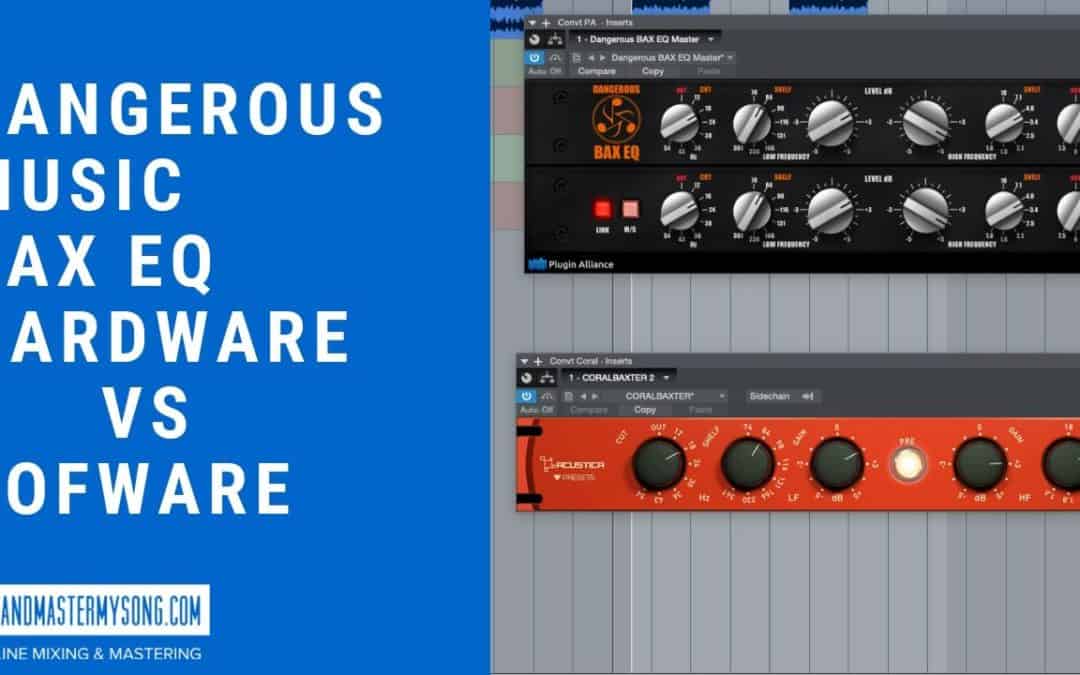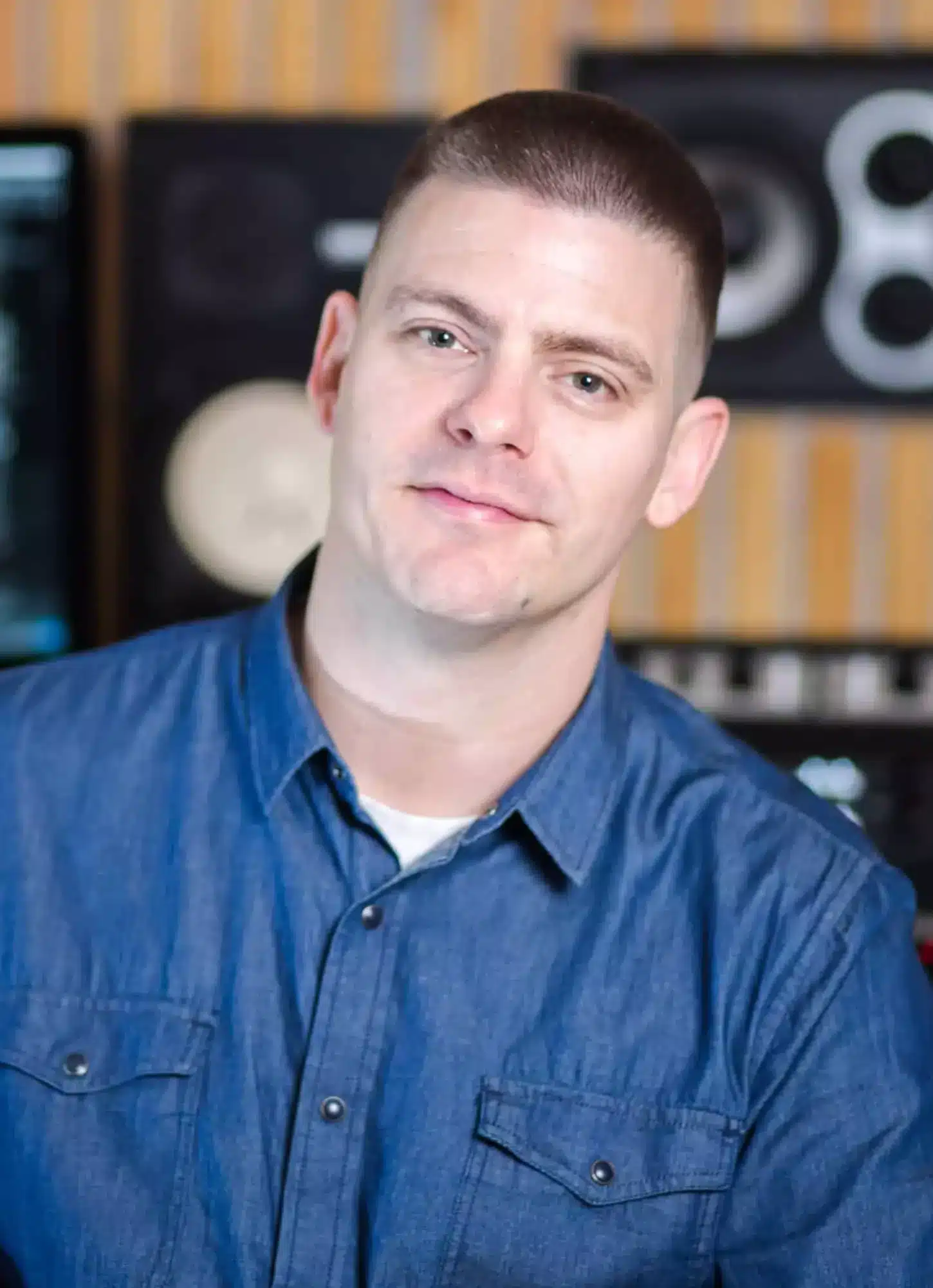Dangerous Music Bax EQ Hardware vs Plugin Alliance & Acustica Audio Software: In-Depth Review
Introduction
In this review, we’ll be taking an in-depth look at the iconic Dangerous Music Bax EQ and how its hardware version compares sonically to the software emulations from Plugin Alliance and Acustica Audio.
The Bax EQ has become a staple in many professional studios thanks to its musical tone-shaping abilities. With renowned transparency and precision, it’s considered one of the best mastering EQs ever made. But how close can software versions get to the original hardware unit?
I conducted a thorough test to find out, analyzing key aspects like sound quality, dimensional depth, converter influence, and more. Read on for a breakdown of his process and main findings.
How the Bax EQ Works
First, a quick overview of what this EQ actually does. The Bax EQ is a unique curve-shaping equalizer, meaning rather than having fixed frequency bands to cut or boost, it uses an infinite number of adjustable pivot points to attenuate high or low frequencies.
This allows for very natural-sounding adjustments free of phase issues or artifacts. It was designed mainly for subtle yet effective mastering grade tweaks, making it exceptionally good at opening up mixes and adding polish.
Bax EQ Uses
Thanks to its precision and transparency, the Bax EQ can used for tasks like:
- Gently brightening dull, muffled mixes
- Adding airiness and clarity to recordings
- Attenuating harshness and reducing listener fatigue
- Evening out old or dark recordings
- Giving a final polish to completed mixes and masters
It mainly excels at providing smooth finish touches, though some also use it for corrective surgery or even mixing. But its specialty lies in putting the final sheen of professional quality on music ready for release.
Who Is the Bax EQ For?
The Bax EQ is primarily intended for mastering engineers and other sound professionals needing a surgical yet musical EQ for precision color enhancement.
However, thanks to the software emulations, it has also become an extremely popular mixing and tone-shaping tool for:
- Mixing and mastering engineers
- Music producers
- Recording studio owners
- Home studio producers
- Audio post-production editors
Anyone wanting to add subtle yet impactful tonal shaping with ease can benefit from the Bax EQ thanks to its very intuitive interface.
Bax EQ Hardware vs Software Pros & Cons
| Version | Pros | Cons |
|---|---|---|
| Hardware | Wider, clearer sound Added “3D” depth and imaging <br> Extra brightness and “magical” analog warmth | Very expensive Not as convenient as software |
| Plugin Alliance | Very close to hardware More affordable and convenient | Slightly duller sound Narrower width |
| Acustica Audio | Also very close sounding Warmer tone | Can sound slightly less bright than hardware |
Bax EQ Hardware vs Software Sound Quality
When it comes to sound quality, the hardware unit did stand out above the software versions in some key areas:
- The hardware Bax had a bit more clarity and width – mixes sounded more open with extra depth and “3D” space
- There was an enjoyable analog warmth only present on the hardware, adding musicality
- The hardware seemed to have more brightness and sheen up top
However, both software versions still sounded excellent:
- The Plugin Alliance emulation was extremely close, though a bit more restricted in width
- The Acustica Coral Bax was also very similar, with a warmer, rounder sound
So while I had a reasonable preference for the hardware unit, I acknowledge both software versions as very convincing.
Bax EQ Software Versions Through Converters
Another interesting test was sending the software Bax EQs through high-end audio converters.
Surprisingly, when using quality converters, the Acustica Coral model came extremely close to the hardware unit. The key differences in dimension and analog warmth were much less apparent.
This shows the importance of high-quality audio conversion in capturing the depth and space of analog hardware.
Client Perception of Hardware vs Software Differences
When it comes to clients noticing these subtle sound differences, I believe most will not detect whether the hardware or software Bax EQ was used.
The variations are reasonably small, and the plugins still capture the core sound and functionality extremely well.
However, experienced engineers may still recognize the added dimension and musicality of the hardware unit. Though at a fraction of the price, the software is still fantastic for most applications.
Bax EQ Hardware vs Software Pricing
In terms of investment, the hardware Bax EQ costs approximately $2,899 USD.
The Plugin Alliance emulation sells for $249 USD while the Acustica Audio Coral Bax goes for $99 USD.
So both software versions provide exceptional value, with the Coral option in particular being accessible for most producers and engineers.
Bax EQ Hardware vs Software FAQ
Should I buy the hardware or software Bax EQ?
- For most home studio producers, the software versions will do the job excellently and save a lot of money. However, mastering engineers may still want the hardware unit for critical tasks demanding utmost depth and analog character.
Is there a difference in sound quality?
- Small differences in clarity, width and analog warmth favor the hardware unit. But both software versions still sound fantastic and nail the core Bax EQ sound.
What tasks is the Bax EQ best for?
- Thanks to its smooth, transparent curve shaping, the Bax EQ excels at finishing touches for mixes, gentle corrective surgery, and glossy mastering polish.
Can the software emulate hardware character?
- To a very convincing degree, yes – especially the Acustica model through high-end converters. Software is reaching incredible analog realism.
Should I use the Bax EQ to mix with?
- While mainly intended for mastering, many do use the Bax EQ subtly across tracks like vocals, acoustic guitar and piano to shape tone and add polish.
Do I Recommend the Bax EQ?
Absolutely – the Bax EQ is a uniquely musical equalizer that lives up its reputation as one of the best tonal shapers ever created. Even in software form, it captures the smoothness, transparency and ease-of-use that makes the hardware so prized.
The hardware may still have the edge for top mastering engineers needing that last ounce of analog magic.
But for most music producers today, the software versions – especially Acustica’s warmer-sounding Coral emulation – will fit the bill perfectly at a great value.
So yes, whether hardware or software, the Bax EQ comes highly recommended!
Conclusion
Hopefully this review gave some keen insights into how well-respected hardware like the Dangerous Music Bax EQ can be recreated in the digital domain.
Ultimately, it will depend on the demands of the particular engineer or producer to determine which Bax EQ is right for their needs and budget.
But the hardware vs software debate wages on with fewer clear winners, much to the benefit of the music-making community as a whole. Watch the video below to hear all the examples. Check out our mixing and mastering services here.






